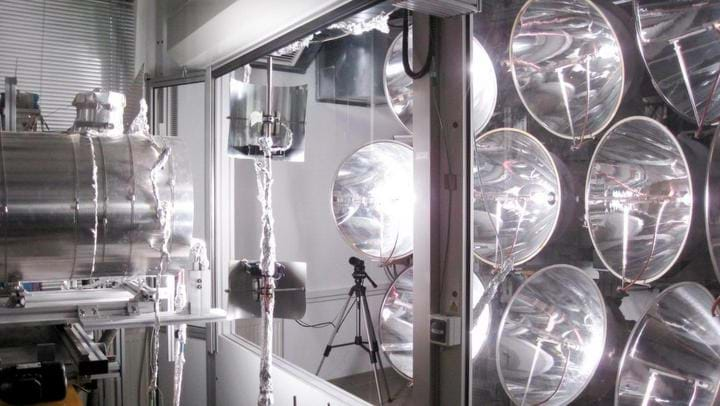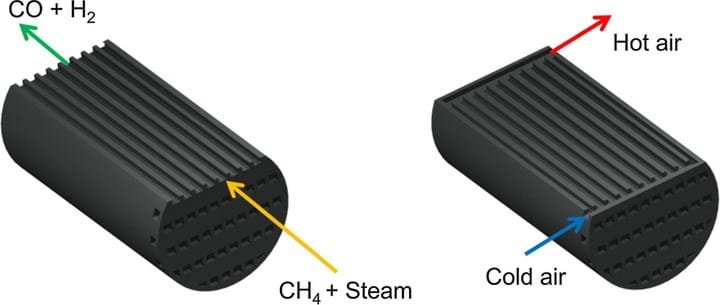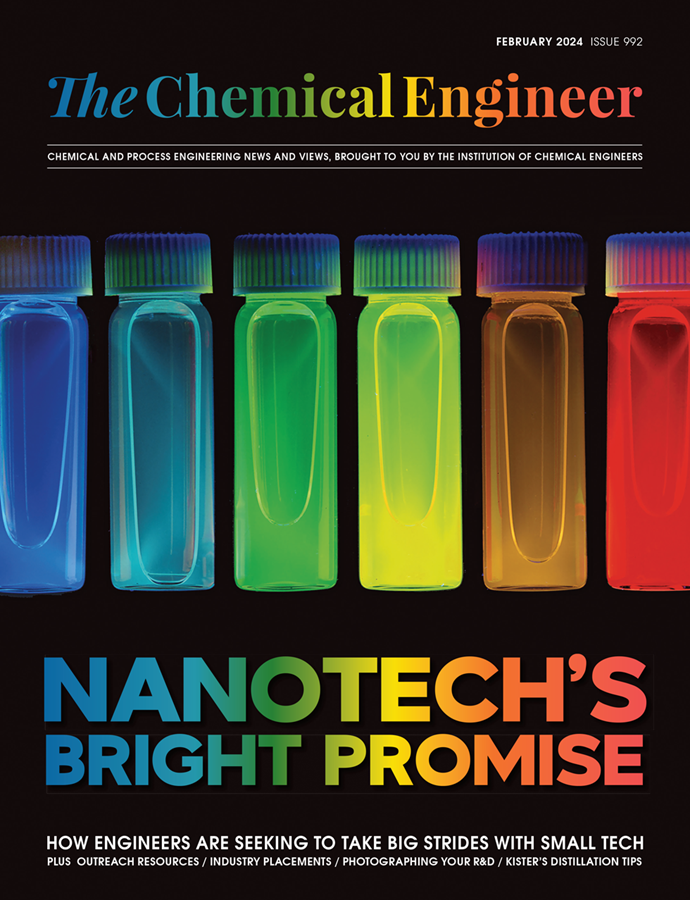Solar reactor uses storage to produce fuel day and night

A SOLAR reactor has been developed that can store thermal energy to produce fuel around the clock. The reactor could potentially be used to produce hydrogen for fuel cells, without any carbon emissions.
One of the most widely-used methods for producing hydrogen is steam-methane reforming, where methane and water (as steam) are converted to carbon monoxide and hydrogen. This reaction requires a temperature above 800oC along with a catalyst, and the heat is provided by burning natural gas.
Using concentrated heat from the Sun offers an alternative that doesn't produce harmful emissions. Solar reactors are currently limited by the day-night cycle, along with varying irradiation throughout the day, or sudden changes due to passing clouds. The changing temperature can change the reaction rates and thus the quality of the product. The reactor also wastes energy as it cools at night.
Storing heat
Scientists at the German Aerospace Center (DLR) have developed a prototype reactor, called CONTISOL, which can be used at night due to a heat storage system. The reactor consists of two types of channels. Heated air is carried through one set of channels, while the thermochemical reactions take place in the other channels. The inner surface of the channels also has a sufficient surface area for a catalyst.
“Ours is a volumetric air receiver,” said Justin Lapp, lead author of the paper. “The centre is an extruded monolith – a large cylinder with many smaller rectangle channels. Every other row of channels is used for chemistry or for passing air through the monolith. These channels are open to the front to allow sunlight to go in and heat up this monolithic material.”

The heated air can be stored and the flow of air is reversed at night in order to power the reactor. During times of low sunlight during the day, the reactor could still be operated in daytime mode but with a slower flow of air to keep the reaction rates constant. Transferring heat via air allows for high efficiency storage without the drawbacks of other methods like latent heat storage in copper or copper alloys, which melt between 900 and 1,000oC. Air is also not corrosive and any leaks would be inconsequential.
Prototype testing
The researchers only tested the reactor prototype – the sunlight, storage, and heat exchange were all simulated during the tests. The monolith was constructed from siliconised silicon carbide (SiSiC), placed inside an insulated stainless steel shell, and exposed to radiation via a quartz window. Both gas streams reached the desired temperature of 850oC at the lab-scale of 5 kW, showing that the design geometry is sufficient for the transfer of solar heat to the gas.
"This scale is a scientific prototype simply for us to understand how to control it. It wouldn’t be commercialised at 5 kW,” noted Lapp. “Commercially, 1–5 MW would be about the smallest for industrial-scale reactors, and they could scale to 100 MW or even larger.”
However, several problems were identified with the SiSiC prototype. Incomplete sealing between the monolith and the metal component that provided the air stream caused leaking. The researchers expect that this problem can be solved with modifications to the design and proper cementing of the metal components to the monolith. Leakage also occurred within the monolith causing the gases to cross between channels. Another challenge identified was that a faster response time is needed, as it took between 30 minutes and 2 hours to reach the steady state needed within the reactor.
“Silicon carbide is a little bit difficult to manufacture because it cannot be machined as well as a metal," said Lapp. "So getting very tight tolerances can be tough. It’s not too expensive but it is not the easiest material to work with in manufacturing.”
The team surmised that a denser material was needed in order to overcome these limitations, and they 3D-printed a test monolith sample using the high-performance alloy Inconel. Unlike the SiSiC monolith, where two rows of channels alternated, the Inconel monolith has single rows of channels alternating between the two gas streams. Gas tightness tests performed with the Inconel sample revealed no leakages, showing that this is a promising material for future tests.

The example process used for testing the process was methane reforming, but the reactor could be used for numerous other processes, including those that don't require catalysts. Future work will involve testing the chemical performance, and fully testing the Inconel monolith to re-evaluate the thermal performance and demonstrate both daytime and nighttime methane reforming.
Applied Thermal Engineering http://doi.org/gcj2z2
Recent Editions
Catch up on the latest news, views and jobs from The Chemical Engineer. Below are the four latest issues. View a wider selection of the archive from within the Magazine section of this site.




